Dependent on the kindness of others | DECEMBER 17
As the wife of a successful architect, Anna Nachtlicht had enjoyed social prestige and experienced years of material comfort. However, in 1932, the Great Depression forced the couple to auction off their art collection, and in 1933, Leo Nachtlicht lost his occupation. Eventually, the couple was left with no other choice but to rent out rooms. The couple’s two adult daughters, Ursula (b. 1909) and Ilse (b. 1912) contributed to the household. But the situation became untenable. As Anna Nachtlicht writes to her brother Max in Argentina on December 17th, the family had “every reason” to fear that they were about to lose their apartment in Berlin-Wilmersdorf, on top of everything else. While there was realistic hope that their daughters would soon find employment in England, Anna and Leo’s efforts to find refuge abroad had remained largely unsuccessful. Relatives on Leo’s side in France had agreed to house the couple temporarily, until a third country would offer them a permanent home. Anna Nachtlicht clearly resented having to ask for help and deplored the dependence on others, but the constant decline of the situation and dark forebodings left her no choice. She had heard that Argentina was about to change its immigration policy and make it possible to request permits for siblings. With undisguised despair, she asks her brother in Buenos Aires to immediately request a reunification with her and facilitate their emigration.
What will he live on in America? | OCTOBER 26
Since the early 1880s, federal immigration law in the US included a provision seeking to keep out people likely to become a “public charge.” Under the impact of the Great Depression, President Herbert Hoover reinforced the ban in 1930. Aid organizations were hard pressed to find employment for the newcomers: on October 26, a representative of the Employment Department of the Greater New York Coordinating Committee for German Refugees explains to Willy Nordwind of the Boston Committee for Refugees the challenges of finding work for a man who had managed to enter the country but barely spoke any English and had no work experience to boast save as a candy salesman. Nevertheless, the representative promises to continue his efforts on the immigrant’s behalf.
Closed doors | OCTOBER 3
A central goal of “National Peace Action Week,” planned by the Canadian League of Nations Society, was to raise awareness among the Canadian public of the suffering of persecuted Jews. The Jewish Telegraphic Agency reported on October 3rd, 1938 on the plan to establish a national committee of Jewish and other Canadian leaders for the purpose of sensitizing the public to the Jewish refugee crisis and requesting that appropriate measures be taken by the government. Because Canada had enforced restrictive isolationist policy against immigrants since at least the Great Depression, the country had no refugee policy. This already made it difficult for Jewish refugees to immigrate to Canada. An additional problem was widespread anti-Semitism among the public.
Recent arrivals | AUGUST 26
Of the American-Jewish self-help groups assisting Jews in leaving Europe and rebuilding their lives in the United States, the Boston Committee for Refugees was the first. Established in 1933, it consisted entirely of volunteers. Under the leadership of Walter H. Bieringer and Willy Nordwind, the Committee chiefly endeavored to obtain affidavits for would-be immigrants and see to it that they would find employment upon arrival in the U.S. Since the Great Depression, the State Department had orders to keep people “likely to become a public charge” out. It was of great importance to ensure the livelihood of the refugees. The annexation of Austria by Nazi Germany and the colossal failure of the Évian Conference on Refugees reinforced the urgency of helping the desperate asylum seekers. On August 26th, 1938, the Committee’s Acting Executive Secretary sent Bieringer a list of recent arrivals in need of placement.
Individual hakhsharah | AUGUST 11
In July 1938, 17-year-old Marianne Pollak traveled all by herself from Teplitz/Teplice (Czechoslovakia) to England. Not accustomed to the climate there, the young girl developed rheumatism and was in generally miserable condition. Every few days, her mother wrote her caring, supportive letters. While clearly vexed by Marianne’s unhappiness, Mrs. Pollak and her husband made sure to communicate to her the importance of her staying in England. Apparently, Marianne was in an individual hakhsharah program, meaning that she was acquiring skills preparing her for pioneer life in Palestine. In Eastern Europe, the Zionist Pioneer organization “HeChalutz” (“The Pioneer”) had been offering agricultural and other training courses for prospective settlers in pre-state Palestine since the late 19th century. A German branch was established in 1923, but the concept gained traction in western Europe only during the Great Depression and had its broadest reach during the years of persecution by the Nazis. Instead of being prepared collectively on farms, youngsters could also get their training individually, as seems to have been the case with Marianne.
Papers in order | JULY 10
Jews wishing to escape the chicanery and physical danger under the Nazis by emigrating had to procure a large number of documents to satisfy both the Nazi authorities and the authorities in the country of destination. In order to obtain permission to leave Germany, applicants had to prove that they did not owe any tax money to the Reich. In addition to the taxes levied on all citizens, prospective emigrants had to pay the co-called “Reich Flight Tax.” Originally introduced during the Great Depression of the late 1920s and early 1930s, the original purpose of the tax was to prevent capital flight from further depleting the national coffers. Under the Nazis, its main purpose was to harass and expropriate Jews. The tax authorities under the Nazi regime certainly did a thorough job. When the Weichert family of Vienna, consisting of the lawyer Joachim Weichert, his wife Käthe, and the couple’s two children, Hans and Lilian, prepared to leave, a tax clearance certificate was issued even to the ten-year-old son. The document was valid for one month. Having all required documents ready and still valid by the time their quota number came up was an additional challenge faced by those wishing to emigrate.
Skills training for Palestine | JUNE 24
When the Halutz (Pioneer) Movement first began to establish itself in Germany in the 1920s, it had a hard time gaining traction among the country’s mostly assimilated Jews, who saw themselves as “German citizens of Jewish faith.” The Movement, which aimed to prepare young Jews for life in Palestine by teaching the Hebrew language as well as agricultural and artisanal skills, got its first boost during the Great Depression (from 1929), which made emigration more attractive as an opportunity for economic improvement. But even more significant growth took place after the Nazis’ rise to power: so-called “Hachscharot” sprung up all over Germany, instilling young Jews with a meaningful Jewish identity and imparting valuable skills. The photo presented here shows graduates of the Jewish Professional School for Seamstresses on Heimhuderstraße.
Antisemitic premises | MAY 11
From its inception, the Horthy government had made no secret of its antisemitism. As a matter of fact, in 1920, Hungary was the first European country after World War I to introduce a numerus clausus to limit Jews’ access to higher education. First in reaction to territorial and demographic losses in WWI, later in the wake of the Great Depression, there was a striking proliferation of fascist and right wing extremist movements in Hungary, some calling themselves “national-socialist.” One such group was the rabidly antisemitic Arrow Cross Party, founded in 1935. In 1938 a bill was introduced to restrict the economic and cultural freedom of Jews in the country. This May 11 report from the Jewish Telegraphic Agency describes Count Apponyi’s vehement critique of the bill in the Chamber of Deputies. Dr. Istvan Milotaj, deputy of a right-wing party, defended the bill, claiming that Jews could not be assimilated and that even figures such as Disraeli and Blum had “spiritually remained Jews.”
No coming back | MARCH 30
In the wake of Austria’s annexation by Nazi Germany, the Polish parliament (“Sejm”), fearing the return of up to 20,000 Polish citizens from Austria, passed a bill according to which Poles who had lived abroad for more than five years were to lose their citizenship. The situation of the Jews had improved somewhat under the Piłsudski government (1926–1935), but after the marshal’s death, especially in the atmosphere created by the “Camp of National Unity” (from 1937 onward), antisemitism was resurgent. Universities applied quotas to Jewish students and introduced “ghetto benches” for them, Jews were held responsible for the Great Depression, Jewish business were boycotted and looted, and hundreds of Jews were physically harmed, some killed.
A forced move | JANUARY 26
There are many ways to describe Leo Perutz: novelist, mathematician, native of Prague, chess lover—to name but a few. He was admired by his colleagues and millions of readers. His success as a writer was so great that he decided in 1923 to give up his bread-and-butter job as an actuary. The Great Depression hit him hard, since the crisis not only negatively impacted the bookselling trade but also rendered the family company, in which he had a share, less profitable. To make matters worse, after the Nazis’ rise to power, his Jewish publisher, Paul Szolnay, lost his largest market in Germany. This is one of the last photographs taken before Perutz’s emigration from Vienna to Tel Aviv, Palestine in 1938.
Abortion and politics | MAY 9
On May 9, the Ärztegruppe of the German-Jewish Club (an informal association of physicians within the city’s main German émigré organization) in New York offered a lecture on the topic of abortion. During the Weimar Republic, repeated efforts had been made to abolish or at least reform the anti-abortion paragraph (§218). Its opponents pointed out that it put the working class at a disadvantage, since poverty was the chief motivation for abortion. In 1926, a member of the Reichstag representing a coalition of three right-wing parties, including the NSDAP, proposed legalizing abortion for Jews only. Under the Nazi regime, which promoted the production of “racially valuable” offspring, abortion was illegal unless it prevented the birth of children considered “undesirable.” In the US, the depression had led to an increased demand for abortion, and by the beginning of the 1930s hundreds of birth control clinics had sprung up. Poverty and the lack of access to qualified practitioners often led to the injury or death of pregnant women through self-induced miscarriage. The lecturer, Dr. Walter M. Fürst, was a recent arrival from Hamburg.



































